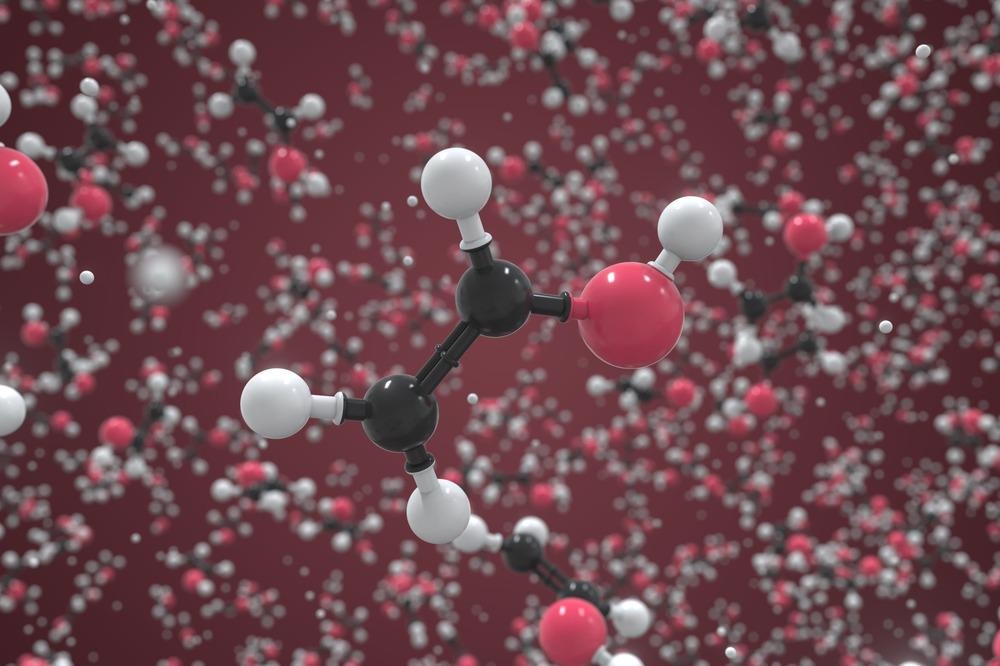This article explores the recent advancements in the numerous applications of polyvinyl alcohol (PVA) and its various composites.

Image Credit: Irina Anosova/Shutterstock.com
PVA is a thermoplastic synthetic polymer that, unlike many other synthetic polymers, is made by hydrolysis of poly(vinyl acetate) (PVAc). PVA's applications have grown in the previous decade as a result of its unique qualities, which include strong mechanical properties, chemical and thermal stability, non-toxicity, film-forming capabilities, and inexpensive manufacturing costs.
PVA is used in a variety of industries, including textiles, paper, and food packaging, as well as biodegradable products such as backing rolls, adhesives, coatings, and surfactants. Aside from technical uses, PVA, like other synthetic polymers, has applications in medicine and biology and has become one of the primary focuses of polymer researchers.
Recent Applications of PVA
In recent work in AIP Conference Proceedings, PVA was customized with Bromelain (Pineapple enzyme), which was employed as an additive and examined in various stoichiometric ratios. Maximum tensile strength of 7.66 Mpa, maximum brake load, and stress from the three-point bending test of 35 N and 2.593 Mpa were obtained.
By mixing glycerol and silver nanofibers (AgNWs) into PVA hydrogel, a temperature sensor with frost resistance, water retention, and moldability was created. A comparable PVA/AgNWs hydrogel sensor with biocompatibility and excellent stretchability, which can be used as strain sensors, was recently discussed.
Heavy metal, pH, glucose, and strain can all be detected using modified PVA hydrogels as colorimetric sensors. PVA was combined with poly(3,4-ethylenedioxythiophene) and polystyrene sulfonate (PEDOT: PSS) with the help of ethylene glycol to create an anti-freezing conductive hydrogel. Freezing tolerant and conductive PVA/cellulose nanofibril (CNF) composite hydrogels have also been reported. With glutaraldehyde crosslinked PVA hydrogel as the electrolyte and activated carbon fiber fabric as the electrode, an early electrochemical supercapacitor was built.
In another work, an acrylamide (AA) monomer was added to a PVA/H2SO4 solution to create a dual-crosslinked hydrogel electrolyte for all-in-one flexible supercapacitors with energy densities of 14.2 μWh/cm2 and power densities of 0.94 mW/cm2, respectively. To produce a double crosslinking network, a physically crosslinked PVA was inserted into a chemically crosslinked PEG network. The resulting PEG/PVA hydrogel not only displayed self-healing properties but also shaped memory. Under varied pH buffer solutions, a PEG/PVA hydrogel structure could achieve stable aspirin release. These PVA hydrogels can protect the wound and prevent second injuries caused by external environment stimuli and external mechanical force applied to the wound as a wound dressing, which is useful in clinical practice.
Claim your FREE Visitor Badge for ChemUK 2022
PVA hydrogels
Artificial joints, artificial vitreous bodies, artificial muscles, artificial iris, and artificial cornea could all benefit from PVA hydrogels. The PVA/agar hydrogel bio-composite becomes dense and homogenous after soaking in ammonium sulfate solution, with stronger H bonds between the polymers; tensile strength and toughness increased to 18.0 MPa and 42.3 MJ/m3, respectively. A slow-release fertilizer was created by combining urea in a PVA-alginate hydrogel core with an HCO3-/CO32- rich alkaline cell-free ureolytic culture broth. Lithium ion-conducting polymer mix electrolytes were created using PVA, poly(vinyl pyrrolidone) (PVP), and lithium acetate.
The PVA/sodium polyacrylate polyblend was utilized to create a CO2 separation membrane. The PVA/Gl ratio of 79:30 revealed appropriate structural development, physical properties, and biological functions for osteoarthritis surgery tissue formation at the subchondral bone interface. The appropriateness of PVA for oral sustained release dosage forms has been proven, with advantages such as low susceptibility to pH-dependent or alcohol-induced dose dumping. It was also effectively used to synthesize poorly water-soluble active pharmaceutical ingredients (APIs) into stable amorphous solid dispersions as a thermostable polymer. There was a 150-fold increase in solubility compared to the crystalline API, as well as a high drug loading of up to 55% (w/w).
Future Prospects
Studies have shown that 4D printed materials have the ability to change over time in response to external stimuli (temperature, external force, light, or pH), and PVA hydrogels have demonstrated the potential of 3D/4D printing for future intelligent applications. The classic PVA hydrogel materials continuously reveal more possibilities with the continual development of hydrogel design and constant improvement, as well as the optimization of processing and molding methods, and the future potential of PVA is immense.
Summary
As a well-known polymer in the pharmaceutical industry, PVA is gaining traction in innovative drug delivery systems. PVA appears to be suited not just for the uses in hot melt extrusion HME and sustained release, but also for other upcoming pharmaceutical technologies such as microneedles for transdermal delivery and 3D printing, according to recent papers.
Recent studies clearly indicate that investigating new formulation technologies does not always necessitate the invention of a new (and thus automatically innovative) polymer, but that it is frequently advantageous to explore existing polymers first.
Moreover, extensive research is needed to expand the basic understanding of hydrogels, which have excellent properties such as swelling in various media, biocompatibility, sensitivity to temperature, ionic strength, pH, electrical and magnetic fields, and other stimuli, as well as cytotoxicity, making them very promising for biomedical applications.
More from AZoM: How is AFM Used in the Rubber Industry?
References and Further Reading
Sundar, J. S., Subramanian, R., Venkateshwaran, N., et al. Preparation and characterization of bromelain based poly-vinyl alcohol fiber. AIP Conference Proceedings 2395, 020006 (2021). https://aip.scitation.org/doi/abs/10.1063/5.0068225
Wang, M., Bai, J., Shao, K., et al. Poly(vinyl alcohol) Hydrogels: The Old and New Functional Materials. International Journal of Polymer Science 2225426 (2021). https://www.hindawi.com/journals/ijps/2021/2225426/
Feldman, D., Poly(Vinyl Alcohol) Recent Contributions to Engineering and Medicine. J. Compos. Sci. 4(4), 175 (2020). https://www.mdpi.com/2504-477X/4/4/175
Kasselkus, A., Weiskircher-Hildebrandt, E., Schornick, E., et al. Polyvinyl alcohol: Revival of a long lost polymer. tic, 10 (15) (2018). https://www.sigmaaldrich.com/deepweb/assets/sigmaaldrich/product/documents/132/071/polyvinyl-alcohol-wp2488en-mk.pdf
Disclaimer: The views expressed here are those of the author expressed in their private capacity and do not necessarily represent the views of AZoM.com Limited T/A AZoNetwork the owner and operator of this website. This disclaimer forms part of the Terms and conditions of use of this website.